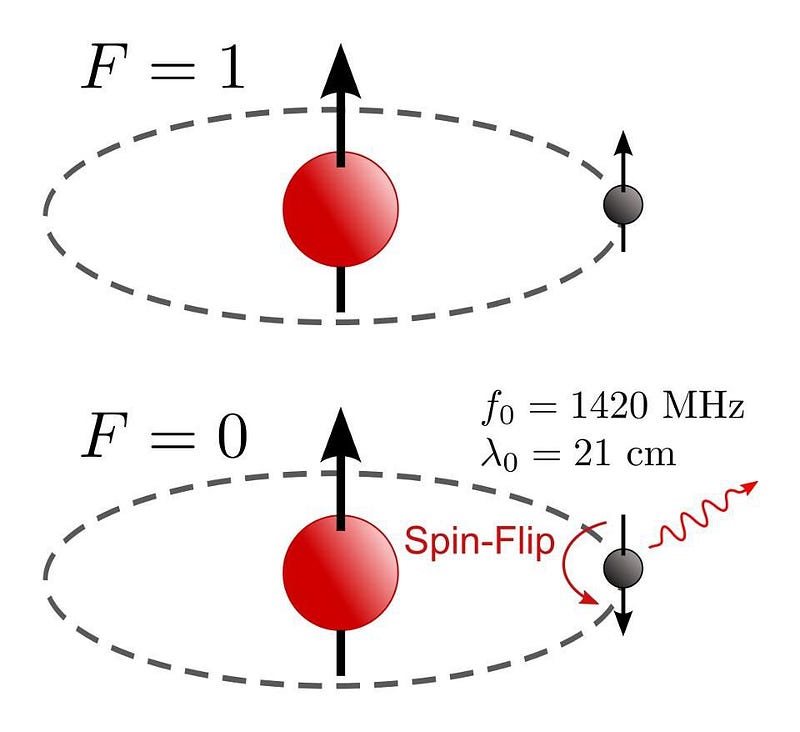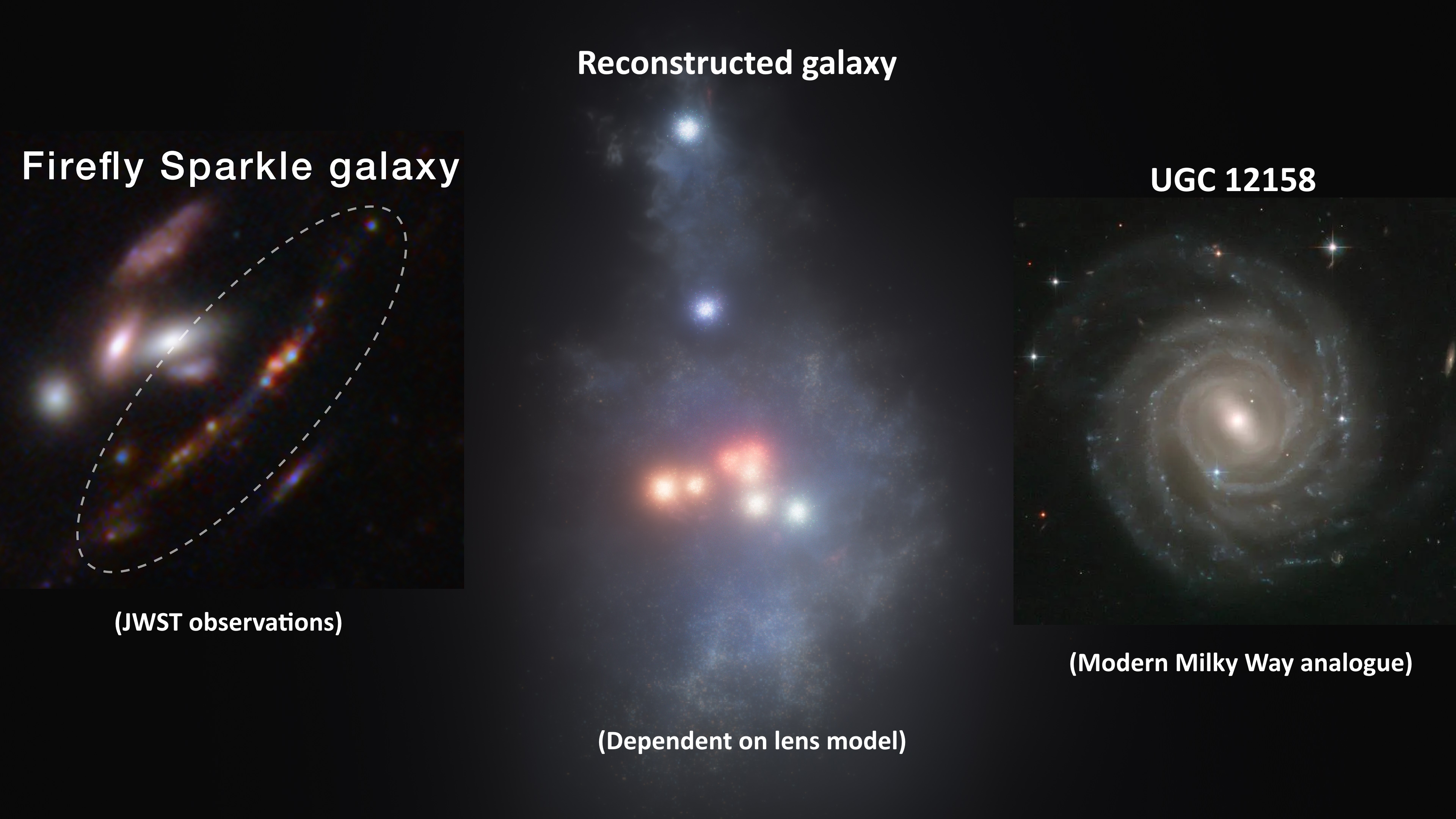Earliest Evidence For Stars Smashes Hubble’s Record And Points To Dark Matter

The indirectly find was completely unexpected, and, if it holds up, could give the James Webb Space Telescope its first tantalizing target.
In the quest to understand our Universe, and the story of where we come from on a cosmic scale, two of the most important questions are what the Universe is made of and how the first stars formed. These are related questions, since you can only form stars if you have enough matter to gravitationally collapse, and even at that, the matter needs to be dense enough and cool enough for this process to work. The earliest stars we’ve ever detected directly come from the Hubble Space Telescope’s imaging of the ultra-distant galaxy GN-z11, whose light comes to us from when the Universe was just 400 million years old: 3% of its current age. Today, after two years of careful analysis, a study from Judd D. Bowman and collaborators was published in Nature, announcing an indirect detection of starlight from when the Universe was only 180 million years old, where the details support the existence and presence of dark matter.

Seeing back to the first stars is a complicated task, since a whole slew of factors are working against you. For one, the Universe is expanding, meaning that even the most energetic ultraviolet light emitted by stars has its wavelength stretched as the fabric of space stretches. As that light journeys to Earth, it gets shifted into the visible, near-infrared, and eventually into the mid-infrared before it arrives at our eyes, rendering it invisible to most telescopes. For another, the Universe is filled with neutral atoms at the earliest times, which means it absorbs (and is opaque to) starlight. It’s only though continued exposure to energetic, ionizing photons that enables the Universe to become transparent. This combination of effects already means Hubble can never see the first stars.

If we want to see this light directly, we have no choice but to look at very long wavelengths with an ultra-sensitive space telescope: exactly what James Webb is designed to be! But with James Webb still on the ground, undergoing its final series of tests and being readied for launch, it will be at least another 18 months before it can search for these early stars and galaxies. Due to a clever effect, however, the neutral atoms that ultraviolet, optical, and infrared telescopes struggle to see through actually provide a signal we can detect: a very particular emission line in the radio portion of the spectrum, at a wavelength of 21 centimeters. The physics of how this works is spectacular.

When you form stars, they impart energy to all the atoms, molecules, ions, and other particles that surround them. In the earliest stages of the Universe, 92% of the atoms that exist (by number) are hydrogen atoms: a single proton with a single electron orbiting it. The starlight that first gets emitted will ionize a portion of the atoms, but will also cause a generic absorption effect, where the electrons within the atoms get kicked up to a higher-energy state. As electrons reattach to protons and/or fall down into the ground state, which they do spontaneously, there’s a 50/50 chance that they’ll wind up with their spins either aligned or anti-aligned with the spin of the central proton. If they’re anti-aligned, they’ll stay there forever. But if they’re aligned, they’ll eventually flip, emitting a very specific quantum of energy with a wavelength of 21 centimeters.

This photon emission feature should travel through the Universe unperturbed, arriving at our eyes after being redshifted and stretched to even longer wavelengths. For the first time, an all-sky average of the radio emissions has been taken to unprecedented sensitivity, and this ultra-distant signature has remarkably shown up! The data collected shows that this neutral hydrogen gas emits this 21-cm line over a very specific duration: from a redshift of 15 to 20, or an age of the Universe between 180 and 260 million years. For the first time, we have actual data that indicates when the earliest stars formed in great-enough abundance to begin affecting the neutral gas in the Universe.

The data also indicates a temperature for the gas, which turns out to appear much cooler than our standard models predict. This could be explained by a number of pathways, including:
- radiation from stars and stellar remnants,
- a hotter-than-expected cosmic background of radiation,
- or an additional cooling due to interactions between normal matter and dark matter.
The first possibility is well-understood and is unlikely to account for this effect, while the second has been measured to incredible precision and is easily ruled out. But the third explanation could be the long-sought-after clue as to the particle properties that dark matter possesses.

But, as with all things, it’s important to exercise caution. Cooling is expected to proceed differently within a cloud of gas when it’s solely comprised of hydrogen versus when it contains heavy elements, but all the clouds we’ve observed previously contain these heavy elements; they’ve formed previous generations of stars. Furthermore, we have extremely cold places within our galaxy, such as the Boomerang Nebula, which is at a mere ~1 K, colder than even the deepest voids in intergalactic space. Given that the first stars were likely very different than the ones we have today, it’s reasonable to think that we may not understand how the radiation from stars and stellar remnants in the early Universe works as well as we think they do.

Still, this is a tremendous advance and our first window into the stars that existed in the Universe beyond the limits of Hubble. It’s an incredibly suggestive and hopeful find for dark matter hunters, indicating that there may be a measurable interaction between dark matter and normal matter after all. And it gives the James Webb Space Telescope something to look for: populations of early stars and galaxies turning on in a specific redshift window.

While astronomers are normally cautious, this find has sparked a flurry of speculation. Avi Loeb, quoted in the Associated Press, said, “If confirmed, this discovery deserves two Nobel Prizes,” for discovering the first evidence of these ultra-distant stars and for the connection to dark matter. As Katie Mack wrote in Scientific American:
It is the earliest indication of any kind of structure in the Universe, and a direct window into the processes that led all that unassuming hydrogen gas to condense, under gravity, into stars, and galaxies, and, eventually, life.
And most importantly, this is a glimpse into what it’s like to push back the frontiers of science. The first evidence for anything new is almost always indirect, weak, and difficult to interpret. But these unexplained signals have the power to explain what we don’t yet fully understand: how the Universe came to be the way it is today. For the first time, the Universe has given us an observational clue of where and when and what to look for. It’s up to us to take the next step.
Ethan Siegel is the author of Beyond the Galaxy and Treknology. You can pre-order his third book, currently in development: the Encyclopaedia Cosmologica.





